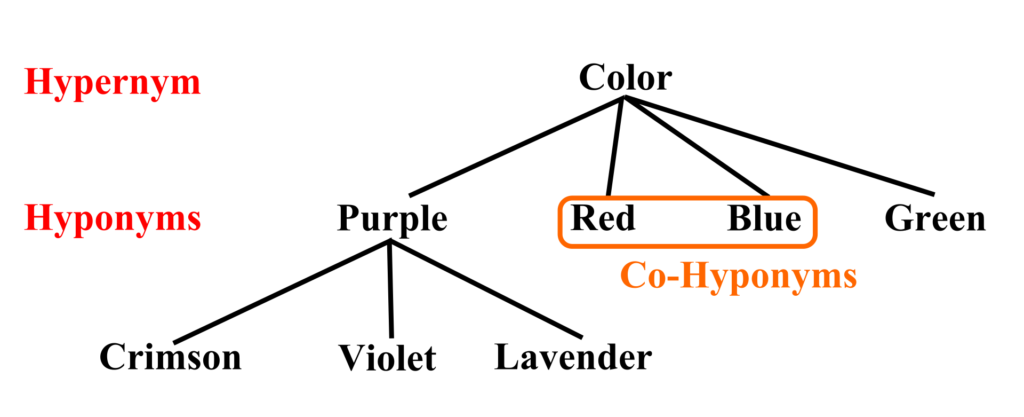In 2022, the Industry Capabilities Classification Standard™ (ICCS®) was developed by industryGENOME® to provide an efficient, granular, and flexible tool for industry use in the analysis of companies and markets. ICCS® is a systematic classification of business (economic) functionality. Its methods and principles are as follows:
- Taxonomy Type: ICCS® is an industry classification system, which is a type of economic taxonomy. An economic taxonomy is a system of classification of economic activity, including products, companies and industries.
- Classification Objects: The objects (characteristics) that are grouped within ICCS® are business capabilities, and end-market or end-use. Other aspects of the business (e.g., therapeutic focus, disease focus, geography, revenue/ pricing models, or other such characteristics) are excluded from the taxonomy classification framework.
- Classification Method: No special theory lies behind modern taxonomic methods. Thus, the taxonomic method for ICCS®, by its very nature, is bespoke and unique. ICCS®’s taxonomic method is as follows:
-
- Obtain suitable companies that represent a class of businesses (e.g., Pharma Services);
- Compare the companies with the known range of variation of the class of businesses;
- Prepare a description showing similarities and differences of known business capabilities; and
- Determine the best position for the business based on existing classifications and determine what revision the classification may require as a consequence of any new capability discovered.
In 2022, the Industry Capabilities Classification Standard™ (ICCS®) was developed by industryGENOME™ to provide an efficient, granular, and flexible tool for industry use in the analysis of companies and markets. ICCS® is a systematic classification of business (economic) functionality. Its methods and principles are as follows:
- Taxonomy Type: ICCS® is an industry classification system, which is a type of economic taxonomy. An economic taxonomy is a system of classification of economic activity, including products, companies and industries.
- Classification Objects: The objects (characteristics) that are grouped within ICCS® are business capabilities, and end-market or end-use. Other aspects of the business (e.g., therapeutic focus, disease focus, geography, revenue/ pricing models, or other such characteristics) are excluded from the taxonomy classification framework.
- Classification Method: No special theory lies behind modern taxonomic methods. Thus, the taxonomic method for ICCS®, by its very nature, is bespoke and unique. The taxonomic method used in ICCS® is as follows:
- Obtain suitable companies that represent a class of businesses (e.g., Pharma Services);
- Compare the companies with the known range of variation of the class of businesses;
- Prepare a description showing similarities and differences of known business capabilities; and
- Determine the best position for the business based on existing classifications and determine what revision the classification may require as a consequence of any new capability discovered.
Taxonomy Science (Hyponymy Standard)
- The IICCS® taxonomy is a universally quantified conditional (“is-a”) hierarchy. For example, the notion that “A dog is a mammal,” means the same as “All dogs are mammals,” but it does not mean that “All mammals are dogs.”
When one word describes a category, but another describes some subset of that category, the larger term is called a “hypernym” with respect to the smaller, and the smaller is called a “hyponym” with respect to the larger. Such a hyponym, in turn, may have further subcategories for which it is a hypernym. In the simple biology example, dog is a hypernym with respect to its subcategory collie, which in turn is a hypernym with respect to Fido which is one of its hyponyms. A further example of the hypernymy standard is illustrated below:

- Hypernyms and hyponyms are asymmetric. Hyponymy can be tested by substituting X and Y in the sentence “X is a kind of Y” and determining if it makes sense. For example, “A screwdriver is a kind of tool” makes sense, but not “A tool is a kind of screwdriver”.
- Hyponymy is a transitive relation: if X is a hyponym of Y, and Y is a hyponym of Z, then X is a hyponym of Z. For example, violet is a hyponym of purple and purple is a hyponym of color; therefore, violet is a hyponym of color.
Data Structure
In ICCS®, a node represents a business capability. In computer science, a tree graph is a widely used abstract data type that represents a hierarchical tree structure with a set of connected nodes. Each node in the tree can be connected to many children, but must be connected to exactly one parent, except for the root node, which has no parent. These constraints mean there are no cycles or “loops” (no node can be its own ancestor), and also that each child can be treated like the root node of its own subtree, making recursion a useful technique for tree traversal. The following terms apply to the ICCS® taxonomy:

- Root Node: The root node has no parents. Similar to other economic taxonomies, ICCS® has a single root node, and the root node is “Economy.”
- Child Node: Each node in the graph has zero or more child nodes, which are the hyponyms/ sub-categories beneath the node.
- Parent Node: A node that has a child is called the child’s parent node. All nodes have one or more parents, except the root node.
- Sibling nodes: Child nodes with the same parent are called sibling nodes
- Branch nodes: A node that has at least one parent and at least one child is a branch node.
- Leaf nodes: A node that does not have any child nodes is a leaf node. For market, industry, and company data presented within industryGENOME.com, all calculations (e.g., company size, market size, market share, etc.) are calculated based on leaf node values.
ICCS®s‘s taxonomy can have multiple parents and the taxonomy is expressed as a directed acyclic graph. This differs from a single-parent tree structure, but nonetheless, the recursive, transitive relation (is-a) rule still applies to the ICCS® taxonomy. The multiple parent classification is the result of having two dimensions in the class objects: (i) capability and (ii) end-user/ end-market. The same capability can be applied to multiple end markets. For instance, patient diaries (aka, ePRO) can be used to collect data from patients in clinical trials and is also a type of patient engagement technology. In this example, although the applications and use cases are different, the capability is still the same. Multiple parents are also used when a sub-industry node lies at the intersection of multiple parent industries. For example, Drug Develpment Technology & Infosystems is a sub-industry that has one parent in Drug Develpment, and another in Pharmaceutical Technology. The ability to represent relationships along multiple dimensions extends the flexibility and expressivity of the ICCS®.
Taxonomy Structure Methodology
ICCS® uses a combination of economic, industry, and line-of-business classifications. At the top (root) of the classification graph (e.g., hierarchical tree), ICCS® is similar to NAICs and GICS methodologies, which are focused on macro-economic functions. As the classification becomes more specific, the ICCS® methodology is more market-oriented, similar to the TRBC/ Refinitiv classification system. ICCS® extends the market-based classification framework by further classification into end-use activity groupings. Specific capabilities within activities are broken into capability groups. Capability groups are then further refined into uniquely differentiated capabilities, which are the leaf nodes within ICCS®.
The figure below illustrates the taxonomy structure methodology:

Companies that have been identified to have one or more capabilities that fall within ICCS® definitions are eligible for an ICCS® classification.
If a company’s subsidiary operates separately or independently from the parent company, that subsidiary is considered a separate entity and is classified independently under ICCS® methodology.
Capability assessments are determined at the sole discretion of industryGENOME®. industryGENOME® uses a large language model and supervised machine learning to apply company capabilities within the ICCS® methodology. At this time, industryGENOME® is unable to adjudicate disputes with ICCS® company classifications. In the near future, industryGENOME® intends to offer a validation service to adjudicate such classification objections.
The ICCS® only assigns capabilities to a company at the leaf-node level. A company will be assigned a leaf node for each of its applicable capabilities, regardless of the portion of revenue or earnings attributed to such capabilities. Companies assigned to a leaf node inherit all of the related parent nodes within the leaf node branch.
Primary Nodes
A Primary Node is the lowest-level node that is a common ancestor of the full set of a company’s capabilities. This provides a micro-industry classification for a company that is as granular as possible while still encompassing the complete range of its capabilities. As an example, consider a company that offers both clinical trial technology capabilities and pharma supply chain technology capabilities. The Primary Node is the lowest-level node that is shared between these, which is pharmaceutical technology.
Sources of Information Used for ICCS® Classification
ICCS® primarily uses company websites to determine ICCS® classification. Other sources of information used for classification may include public filings, broker reports, and published research reports.

Branch Node
A branch node is any ICCS® industry capability that has child industry nodes.

Parent Company
A Parent Company is any independent company with children. An ultimate parent company has no parent.

Core Revenue
Core revenue is revenue directly generated by the parent entity, which does not include any revenue generated at a subsidiary entity.

Leaf Node
Leaf nodes are industry nodes that have no children and represent the most granular ICCS® industry capability definition.

Subsidiary
Irrespective of its legal structure, a subsidiary is an entity that operates independently from its parent(e.g., its own brand), with a website and social media profile separate and distinct from its parent.

Subsidiary Revenue
Subsidiary revenue is revenue generated indirectly by a subsidiary entity.
The ICCS® Methodology and Structure fall under the overall supervision of the ICCS® Taxonomy Committee, with members from both industryGENOME™ and Committee panelists. The Committee will consult with the industry community as needed in order to keep the Methodology current and relevant.
industryGENOME™ considers information about changes to the ICCS® Structure and related matters to be potentially investment sensitive. Therefore, all Committee discussions are confidential.